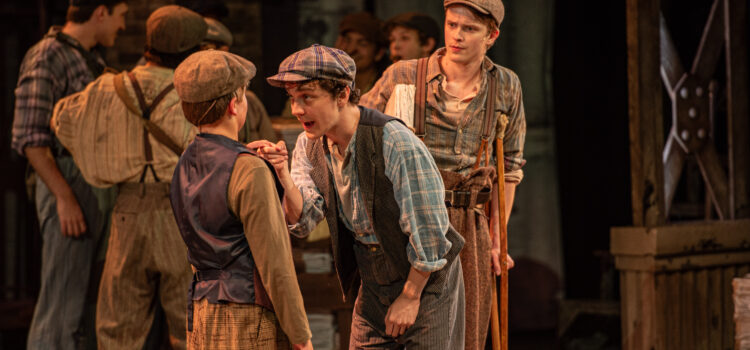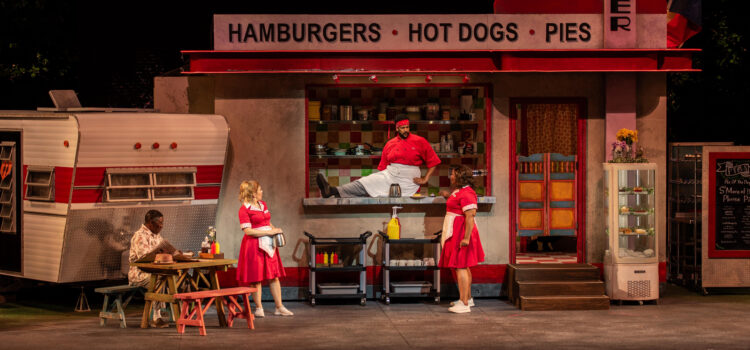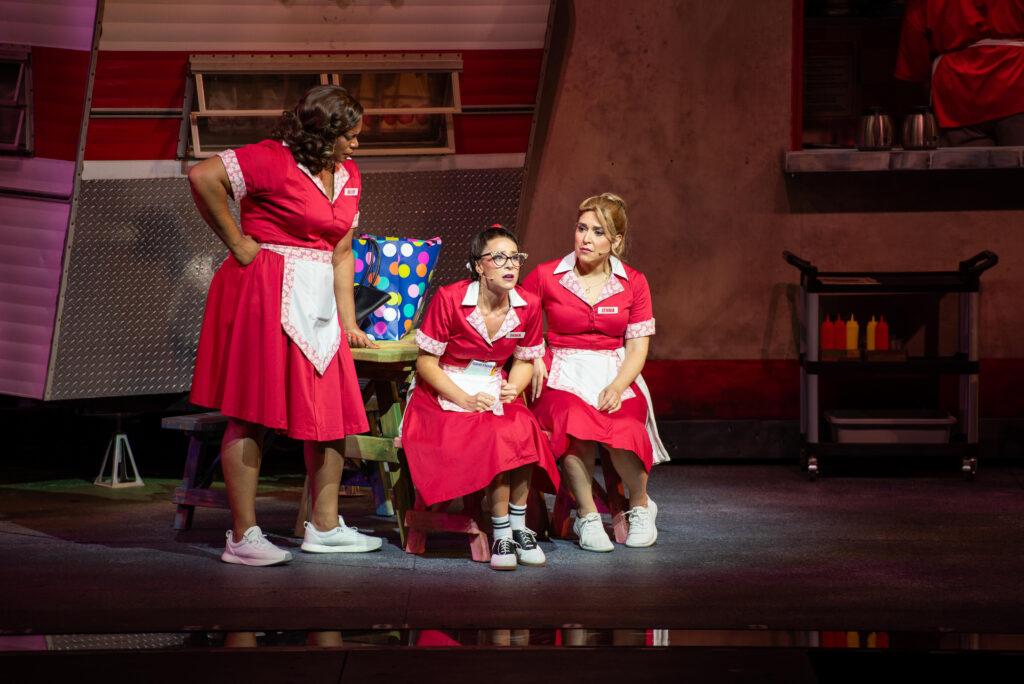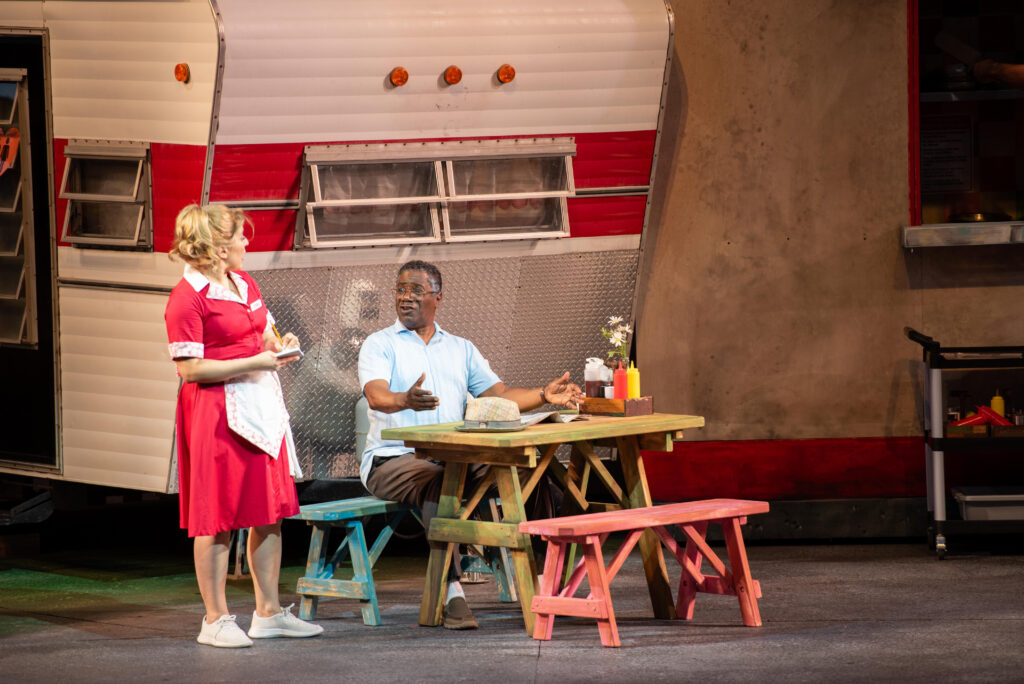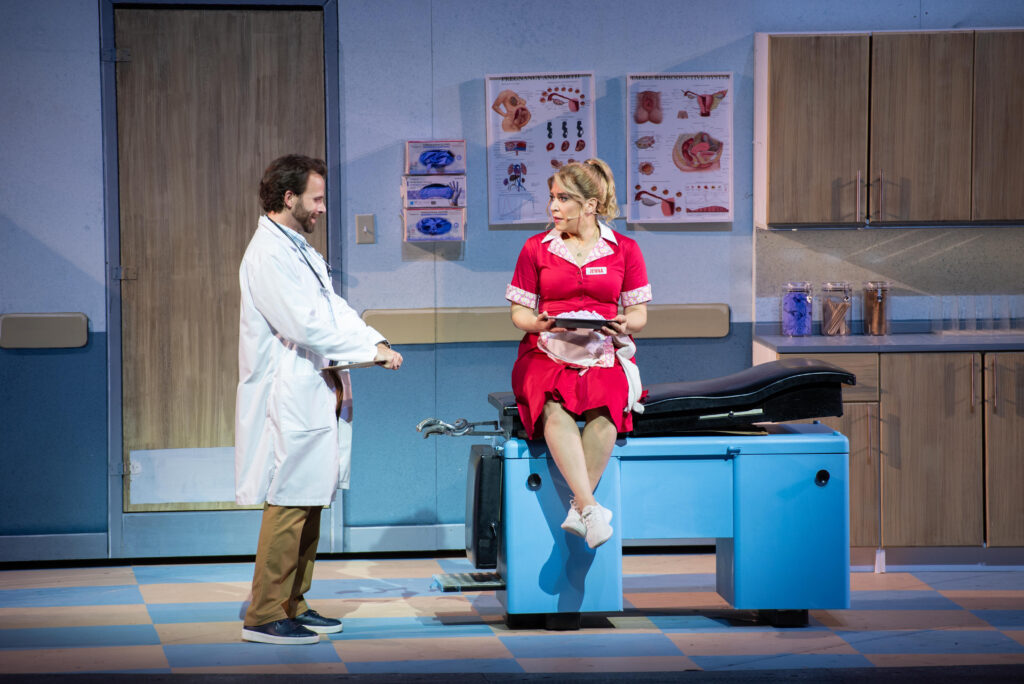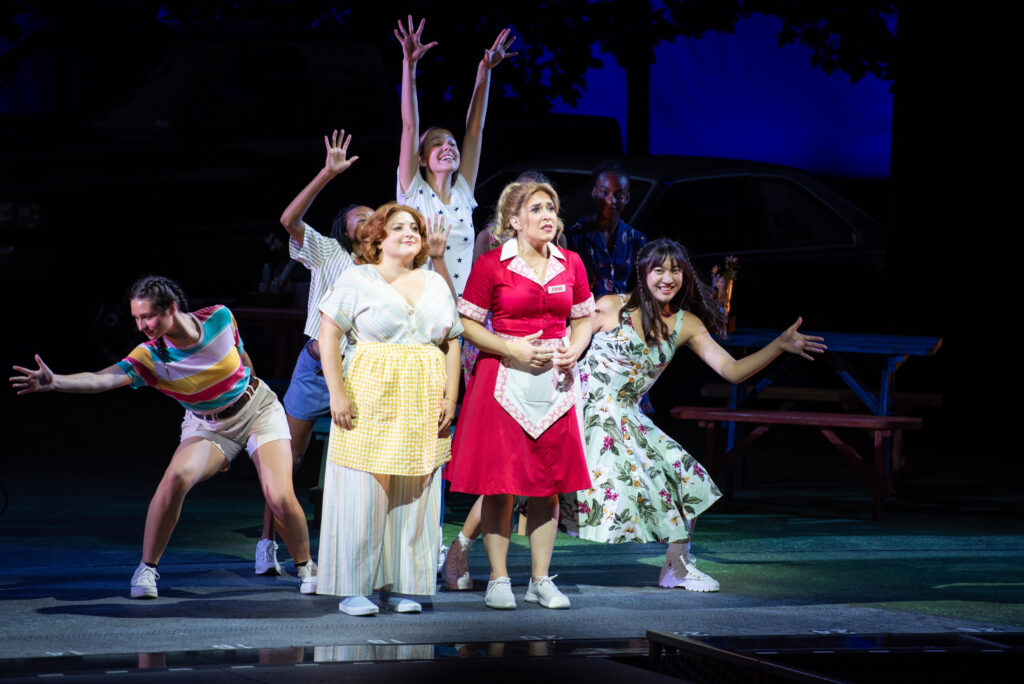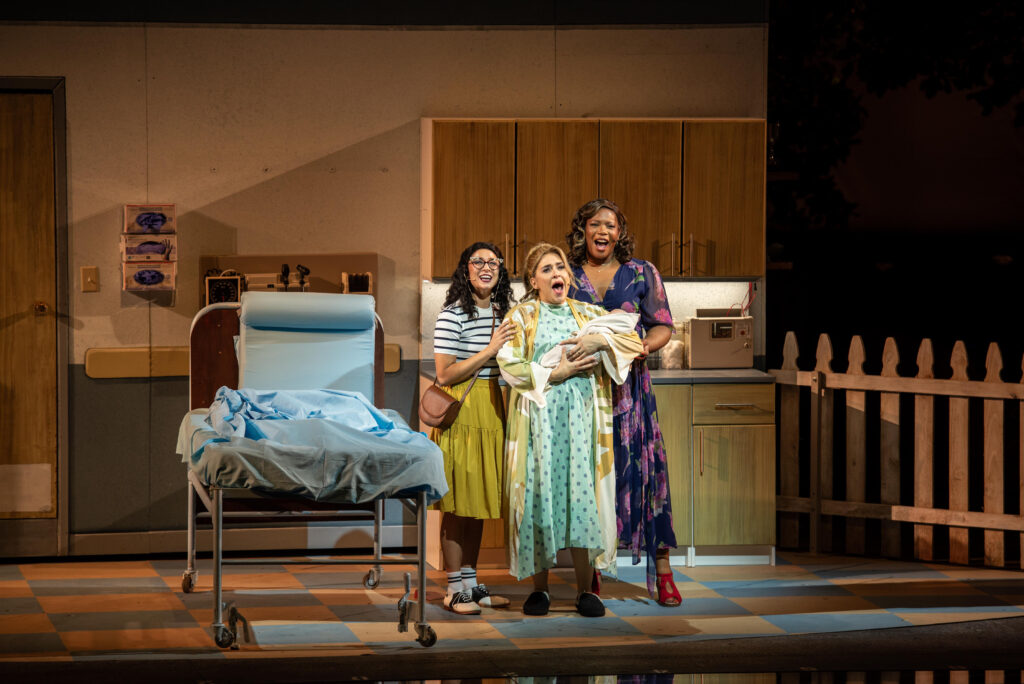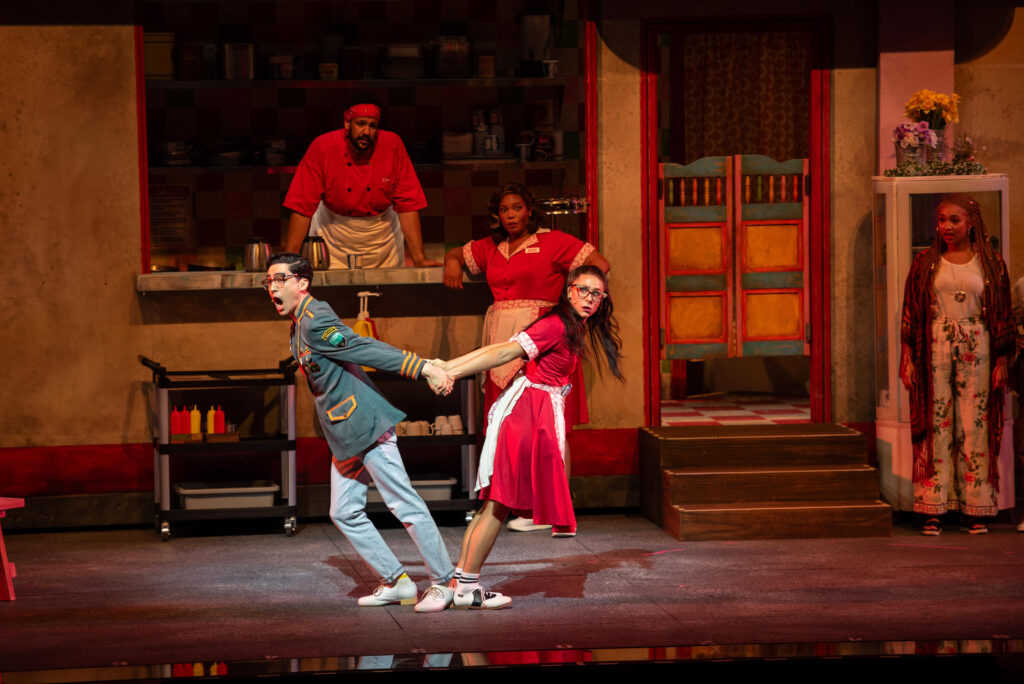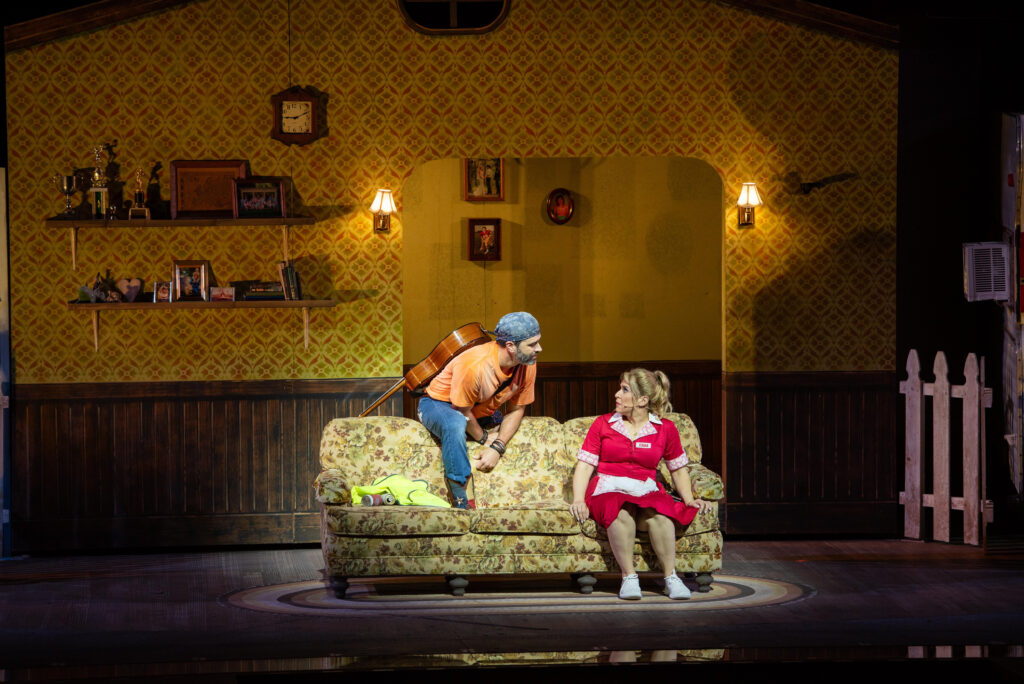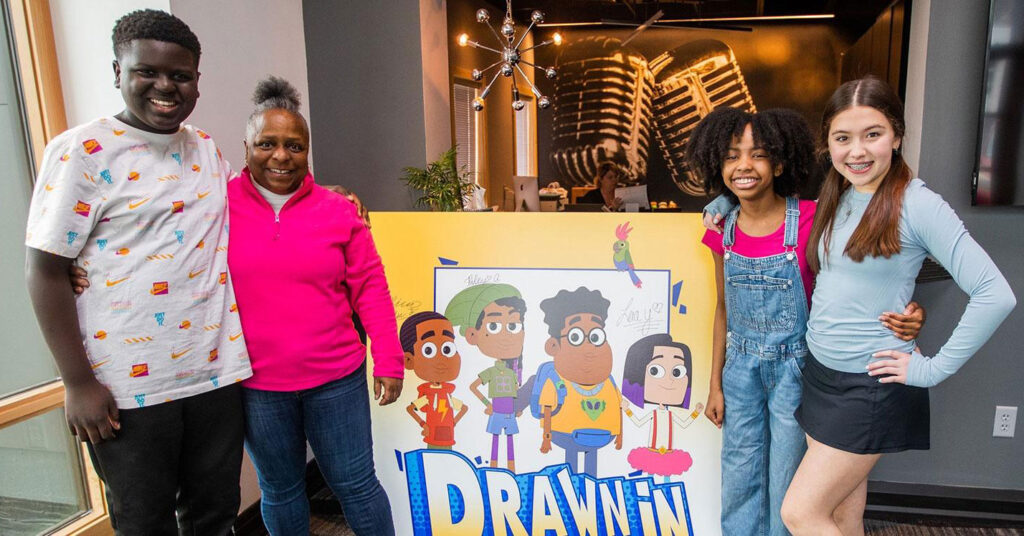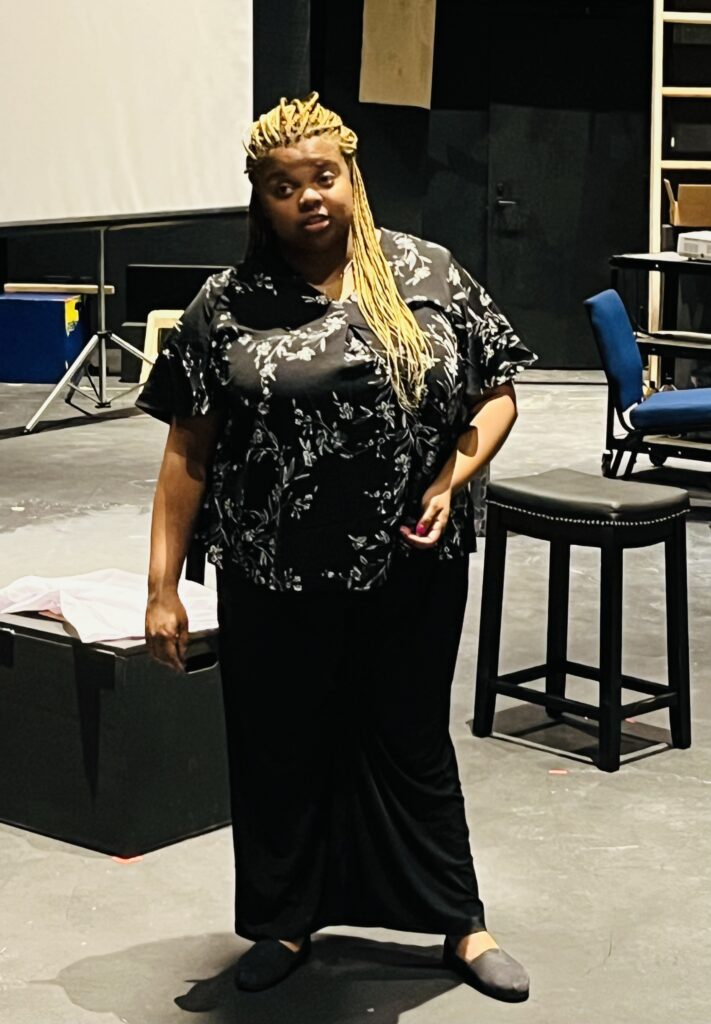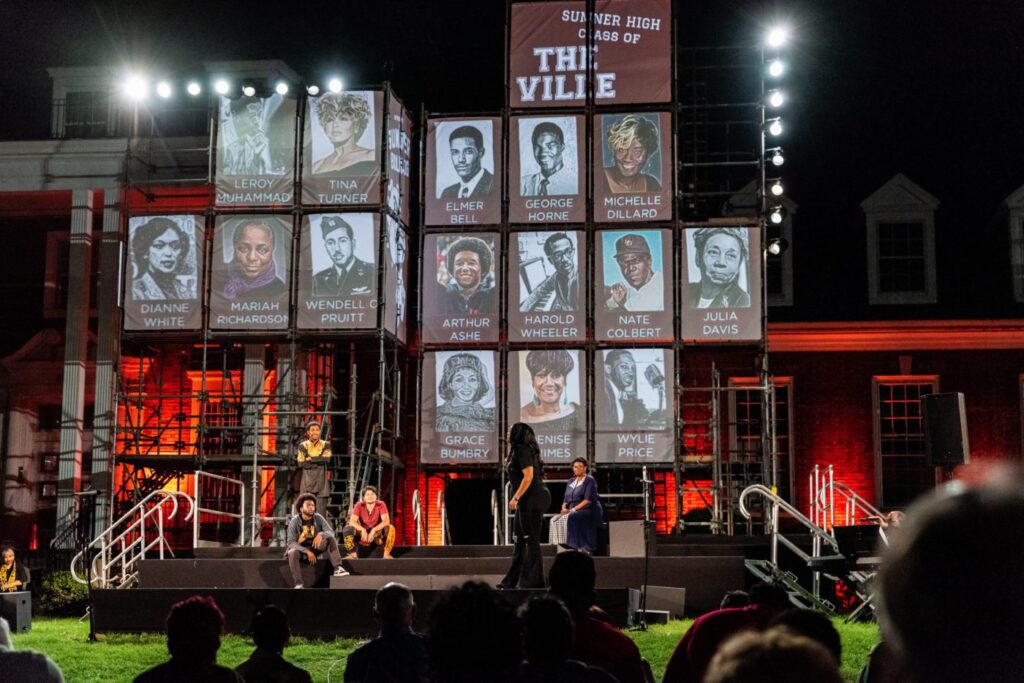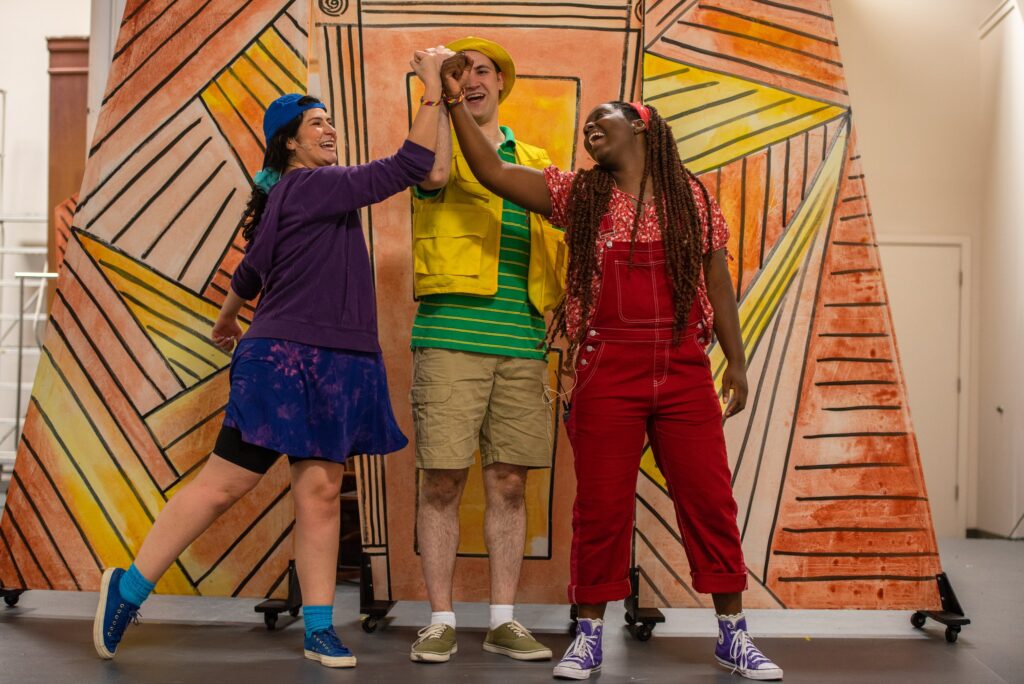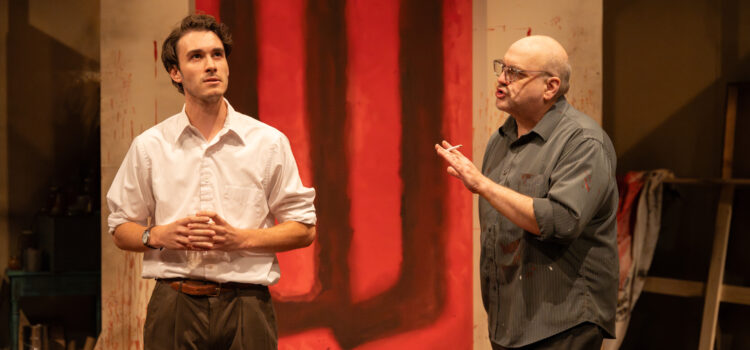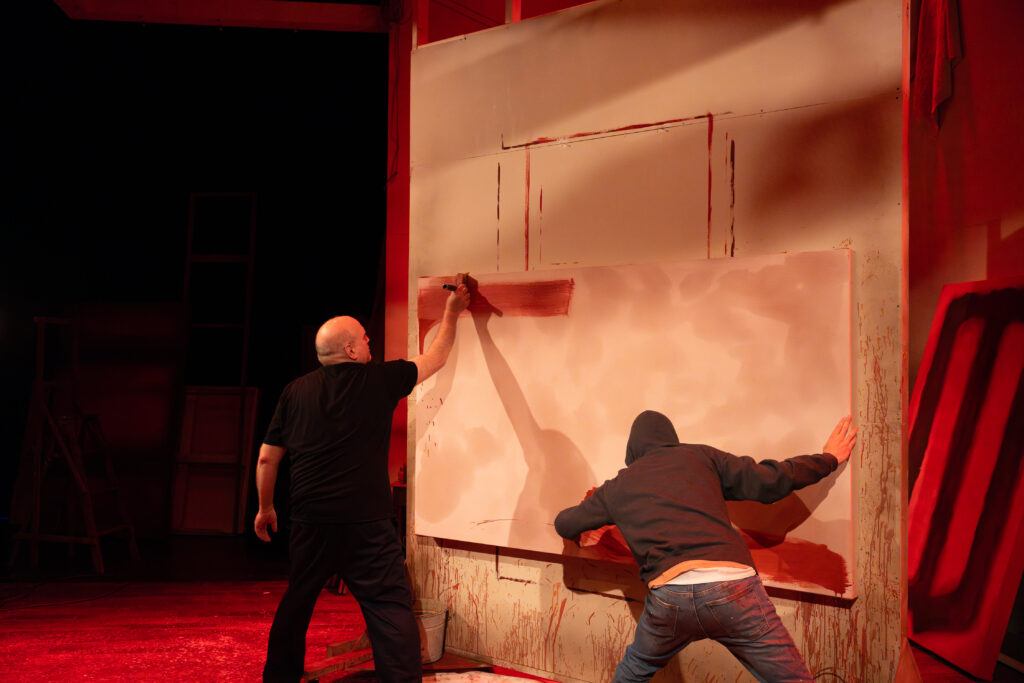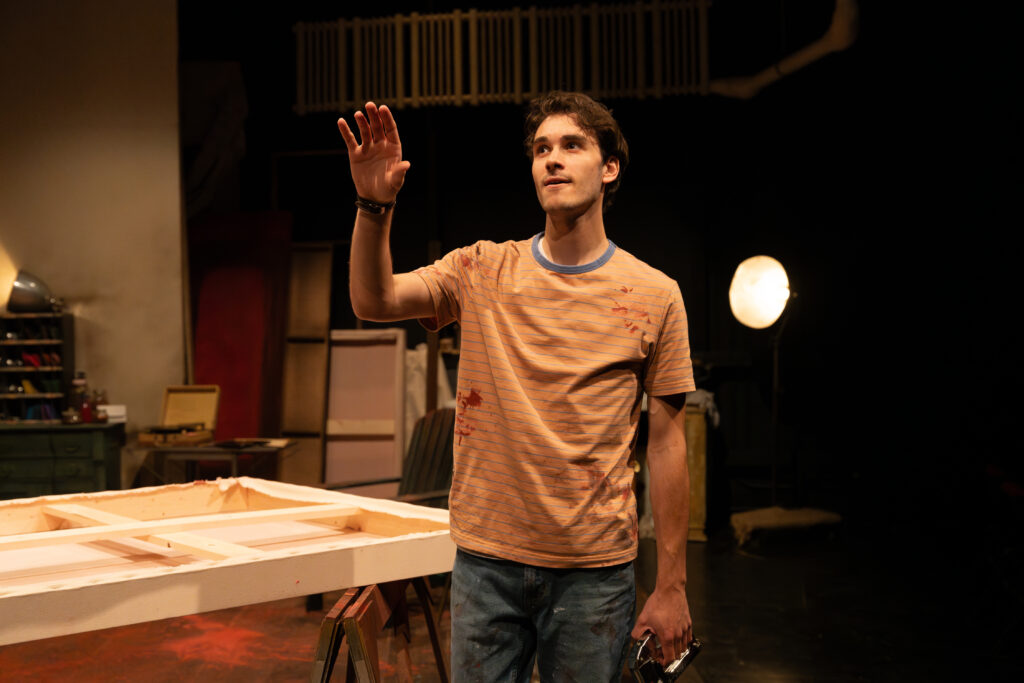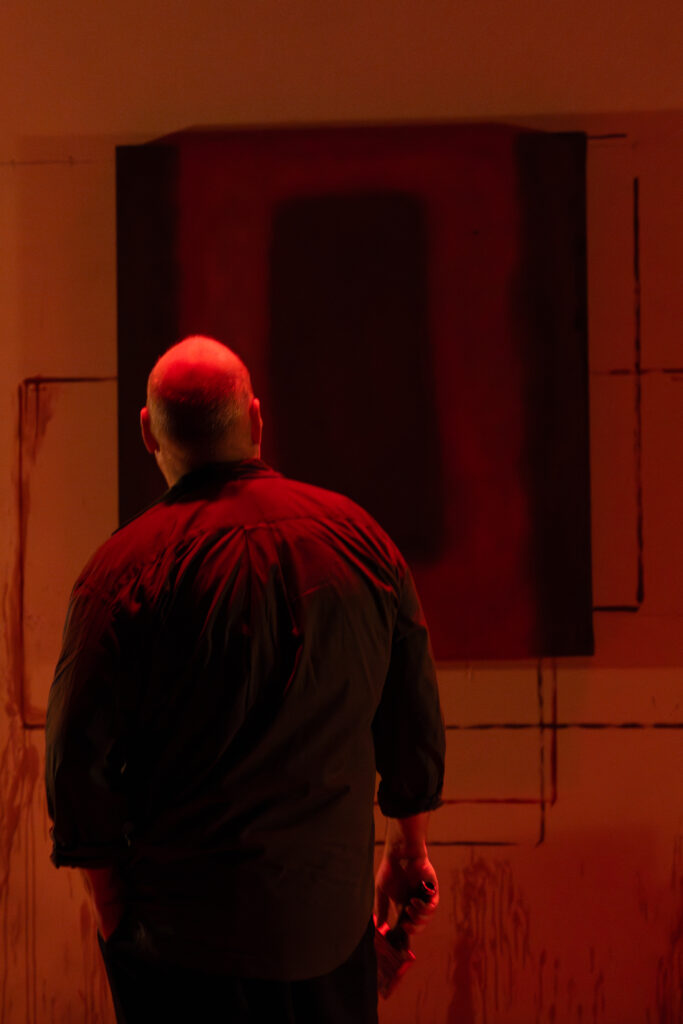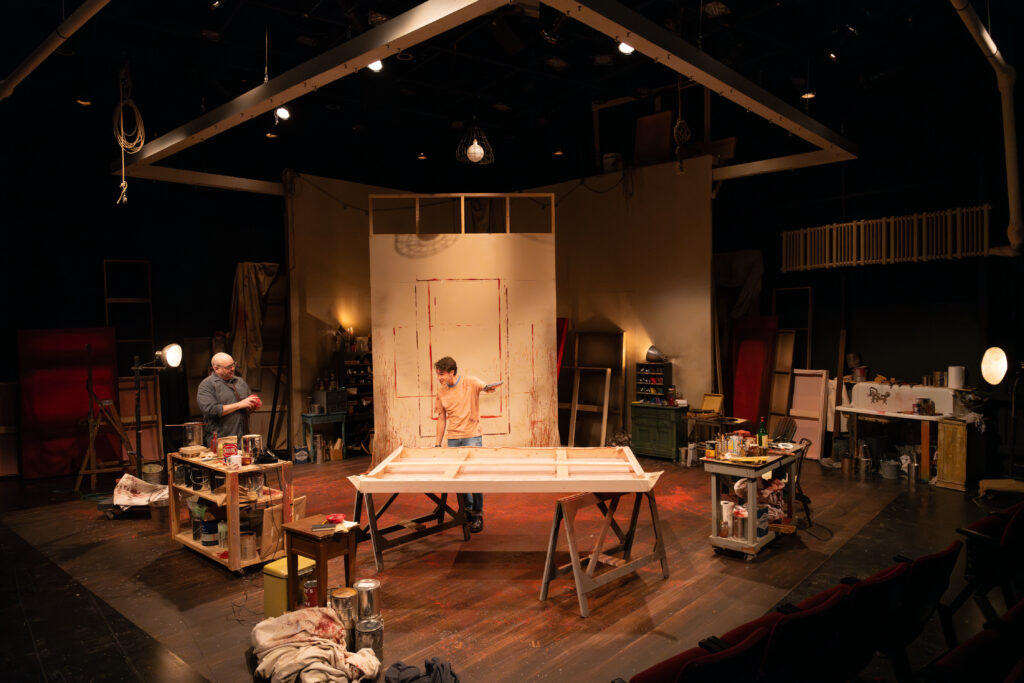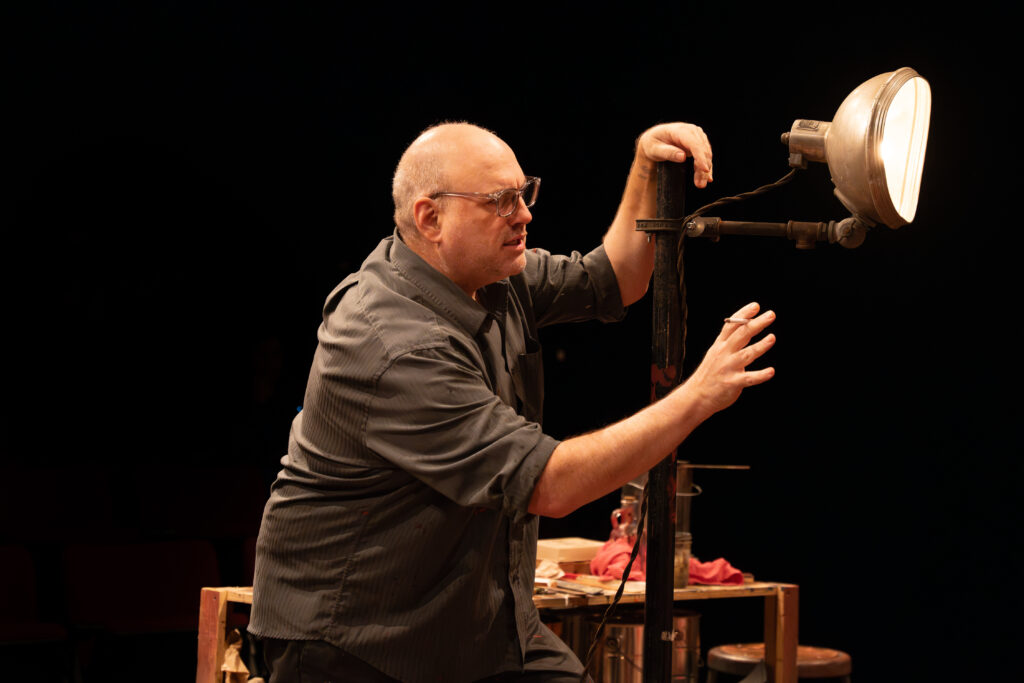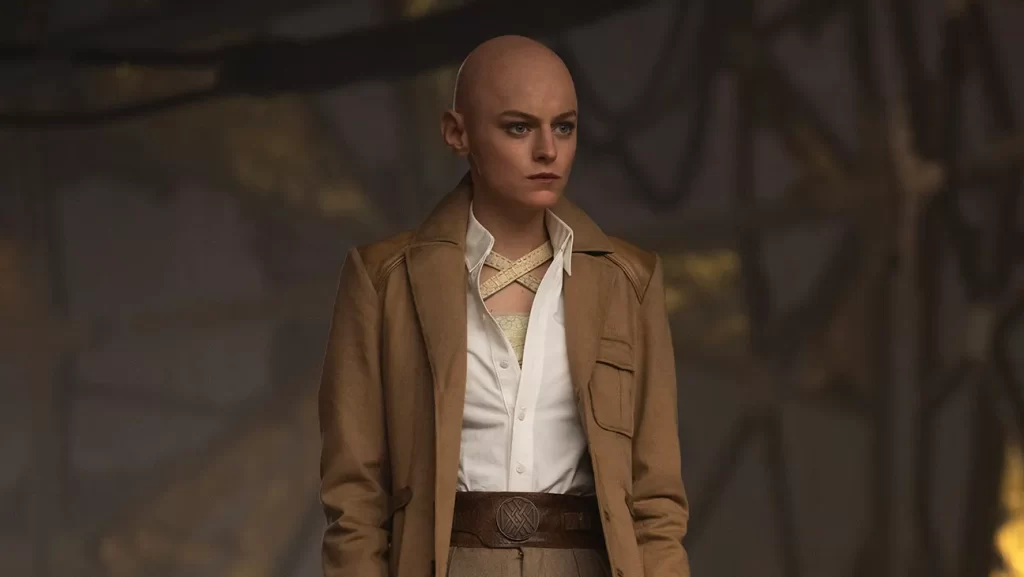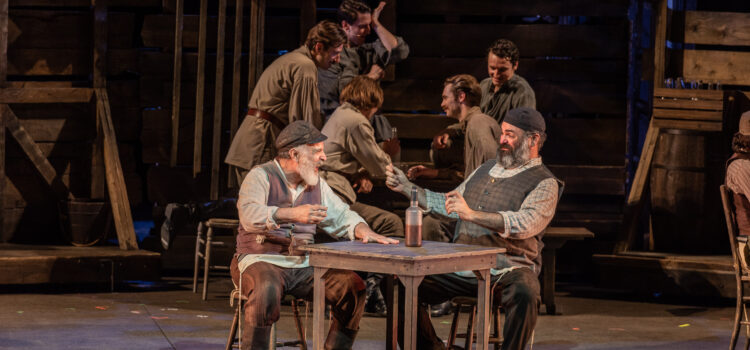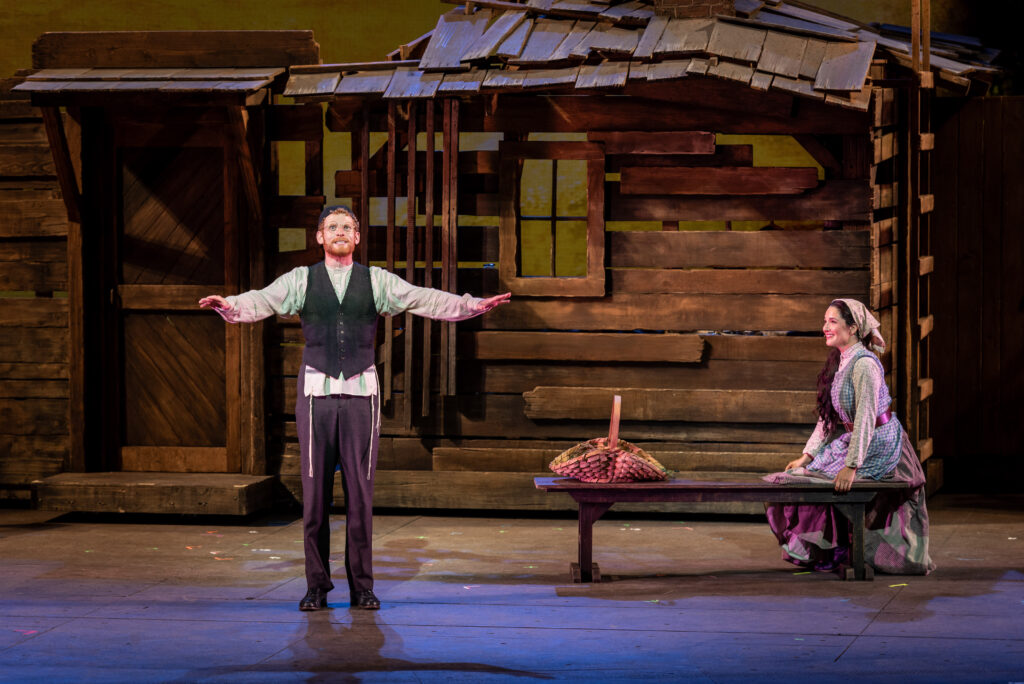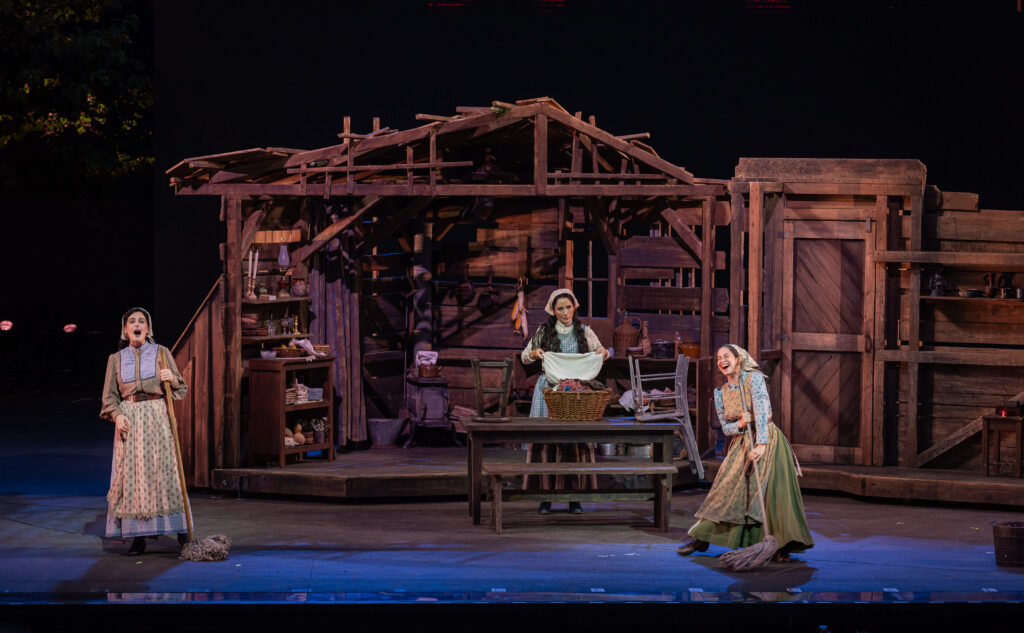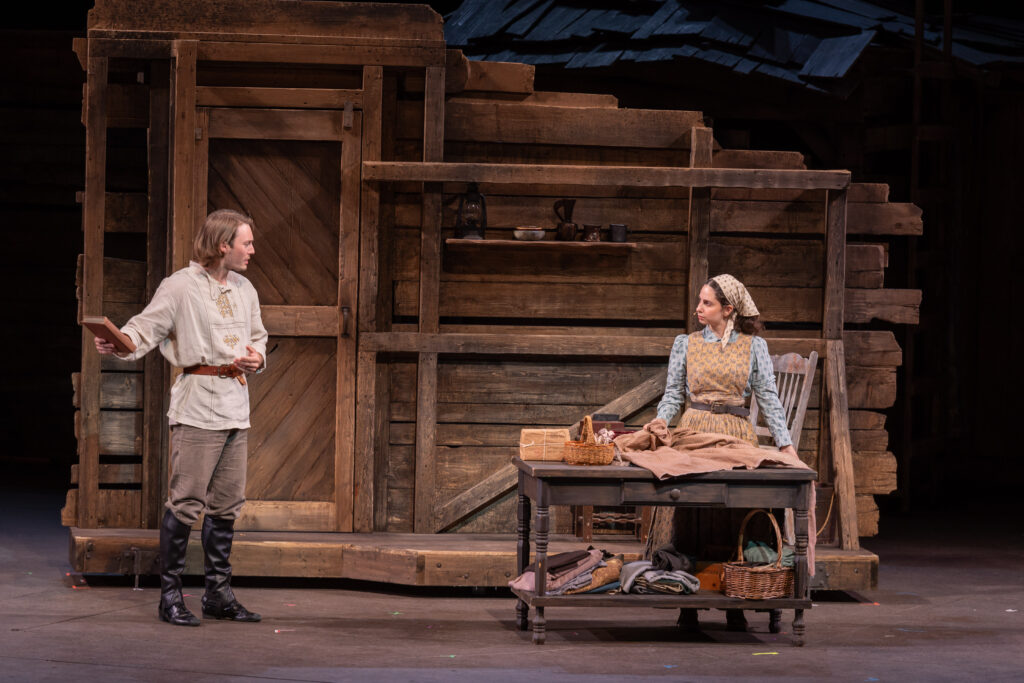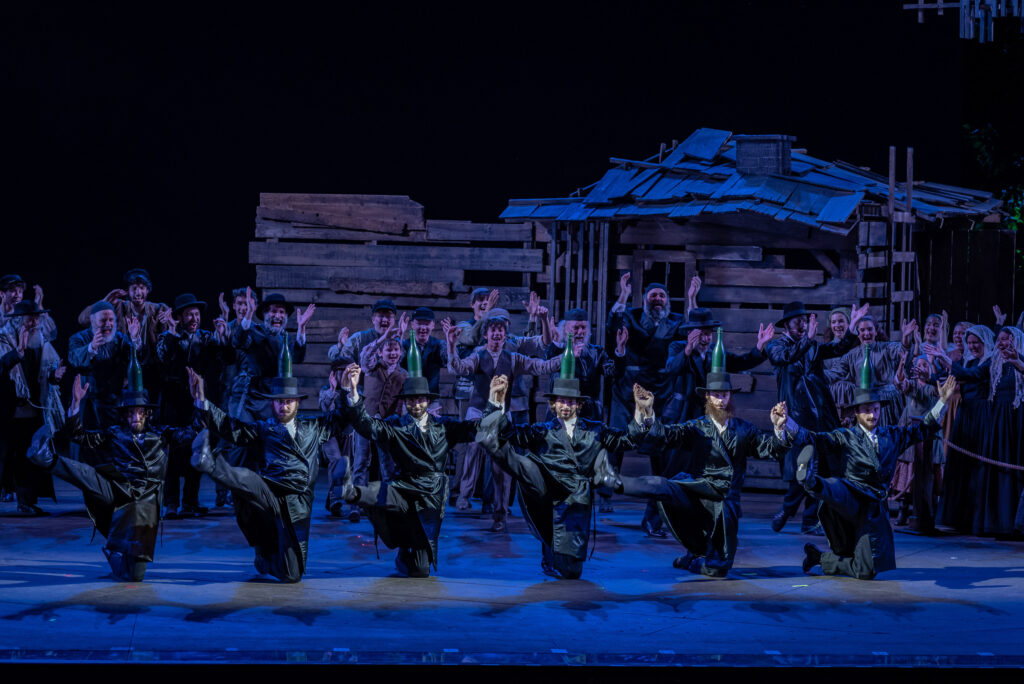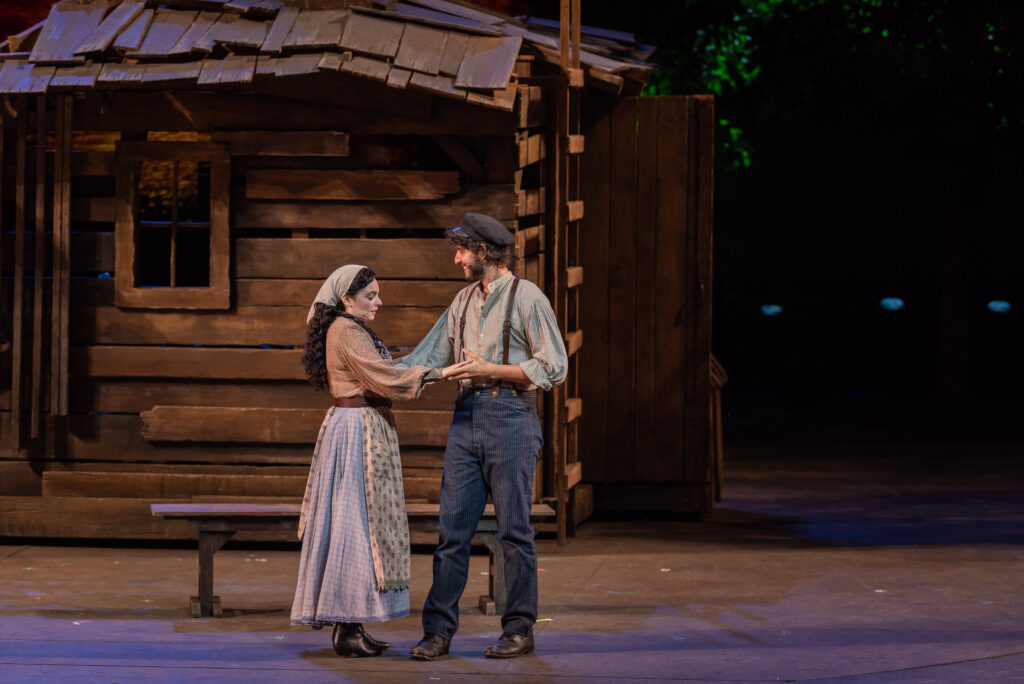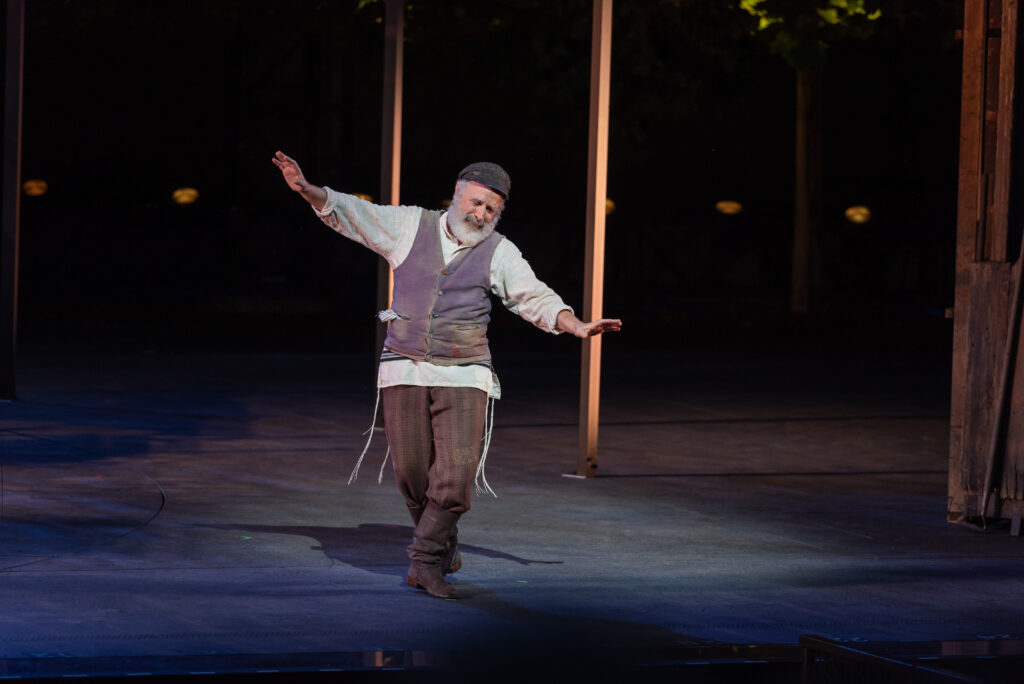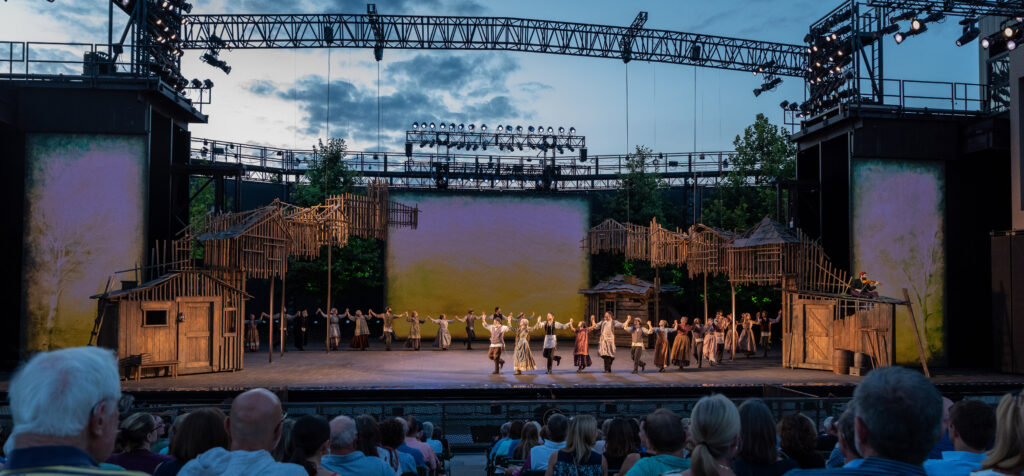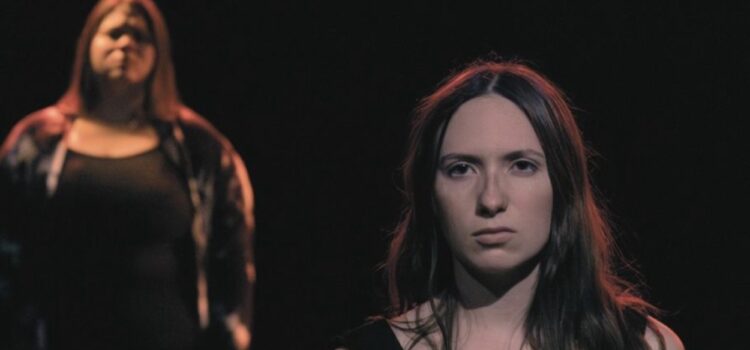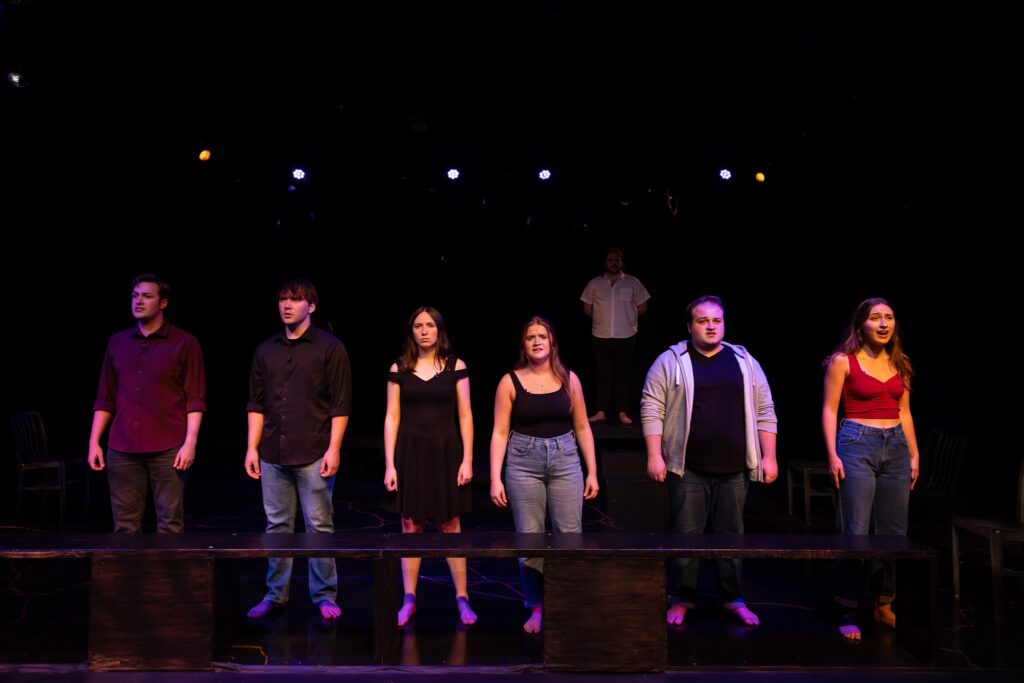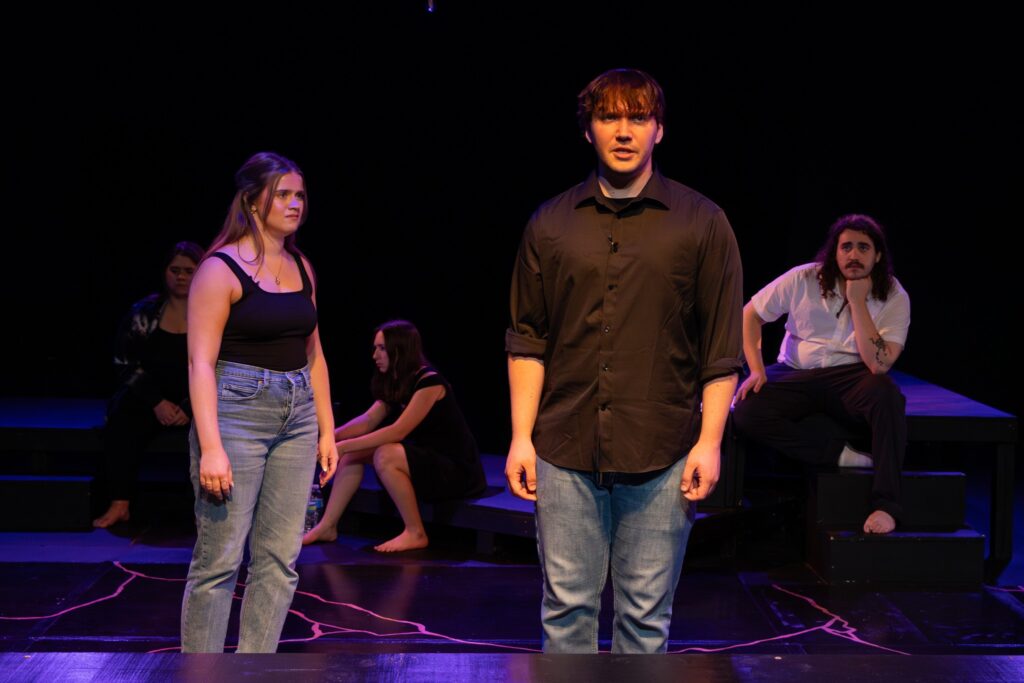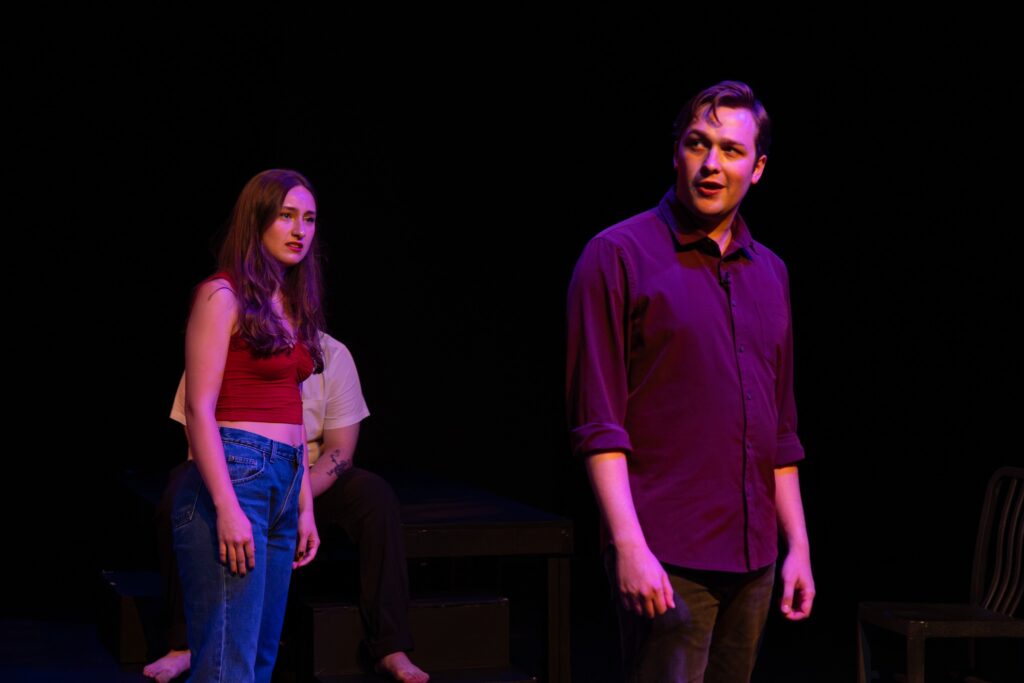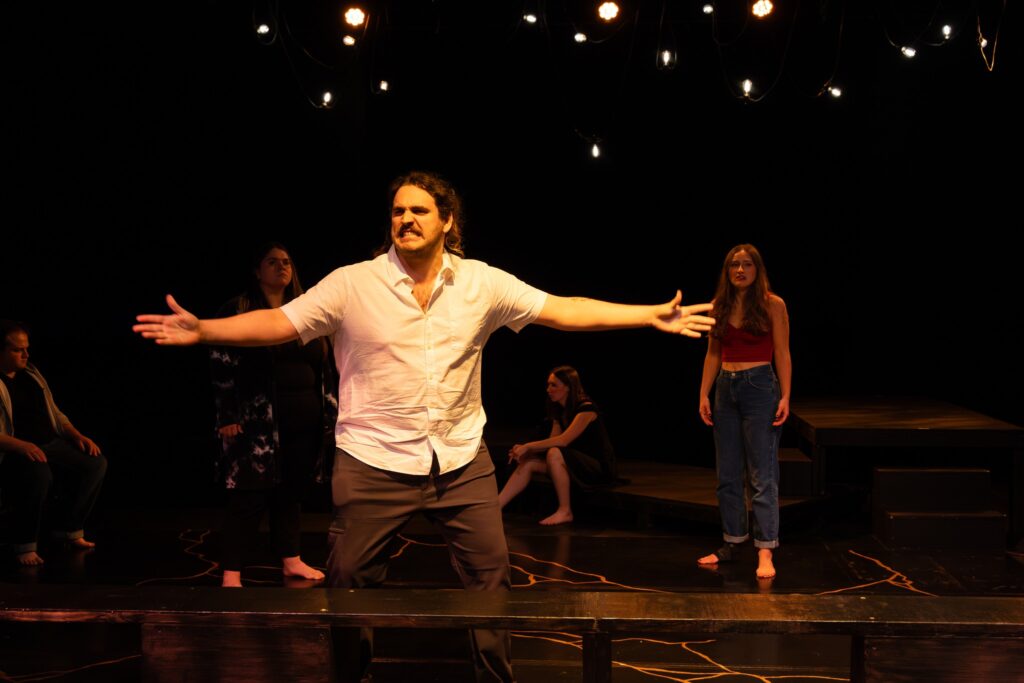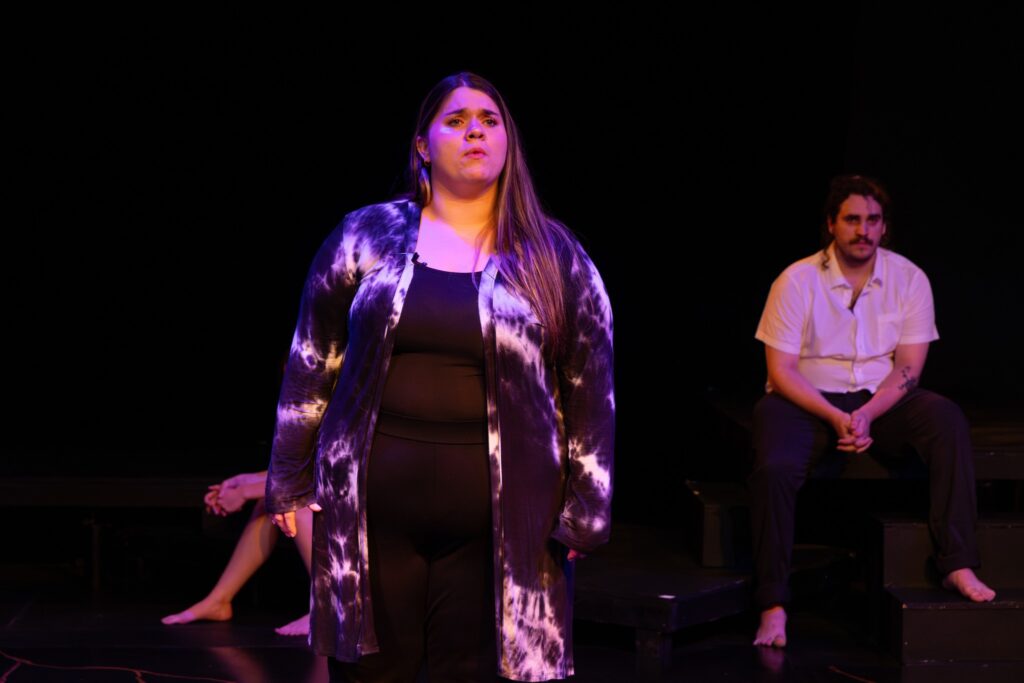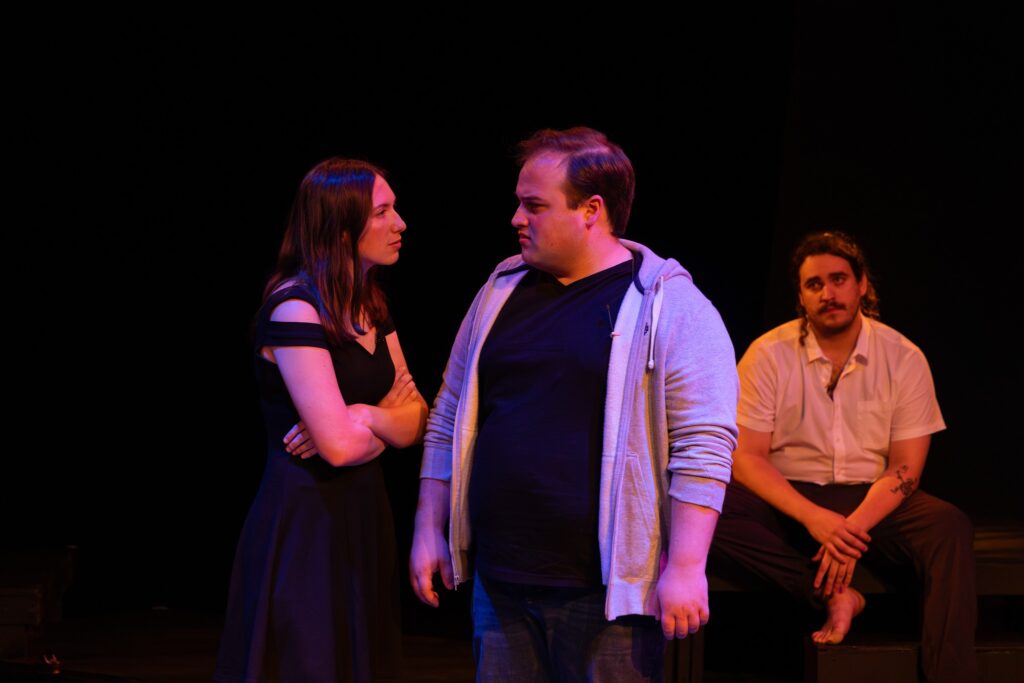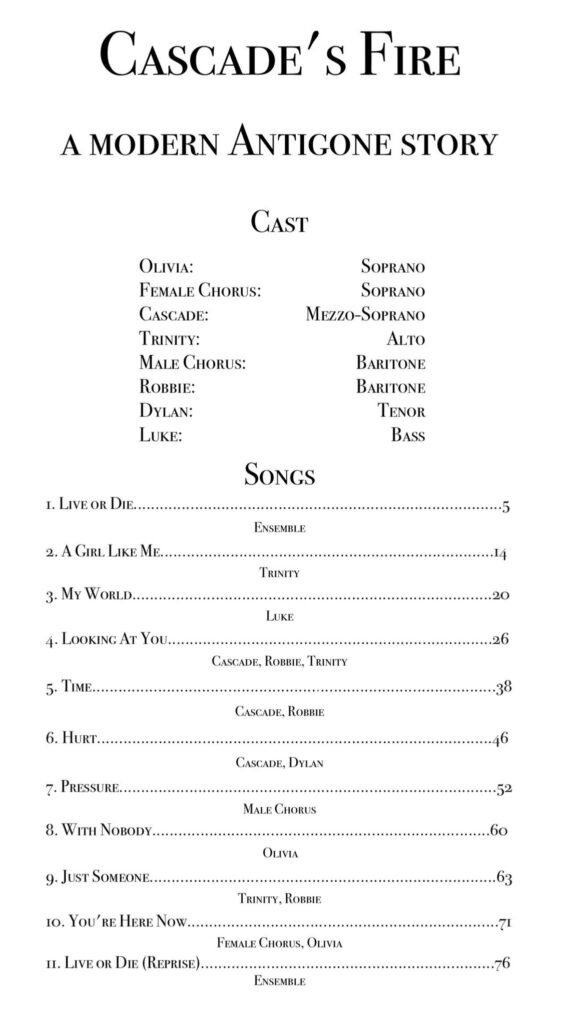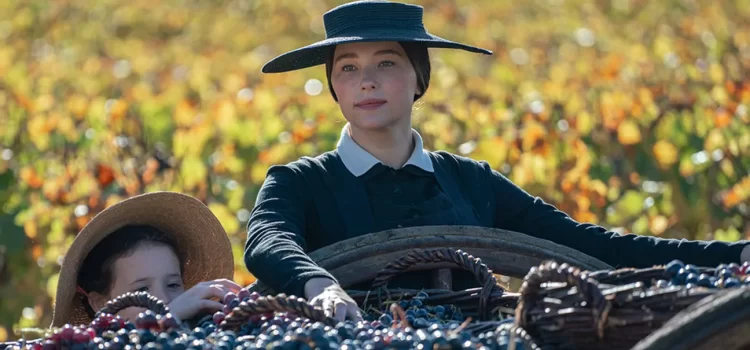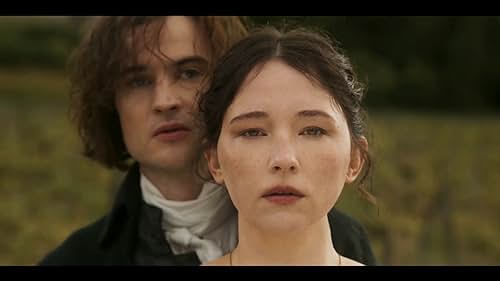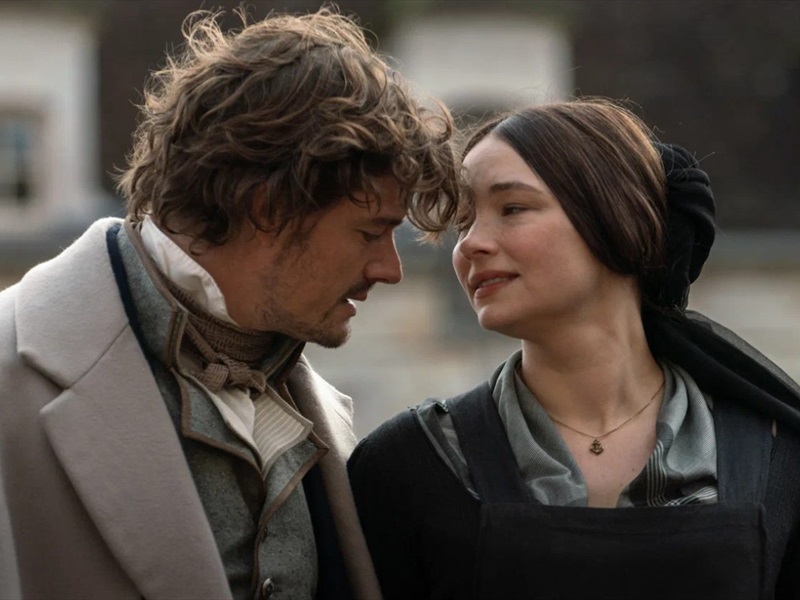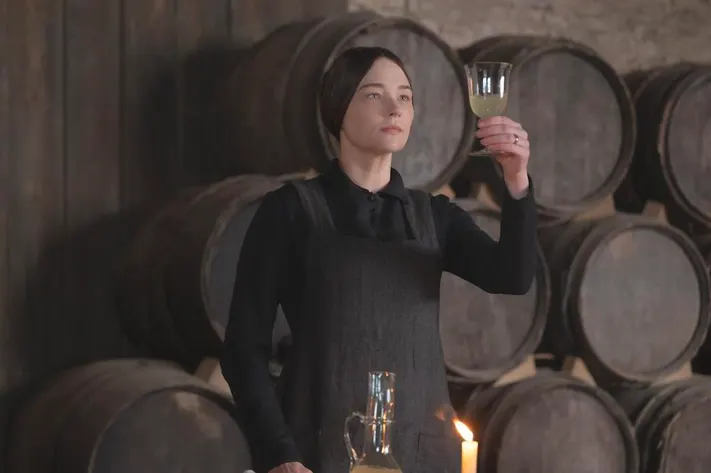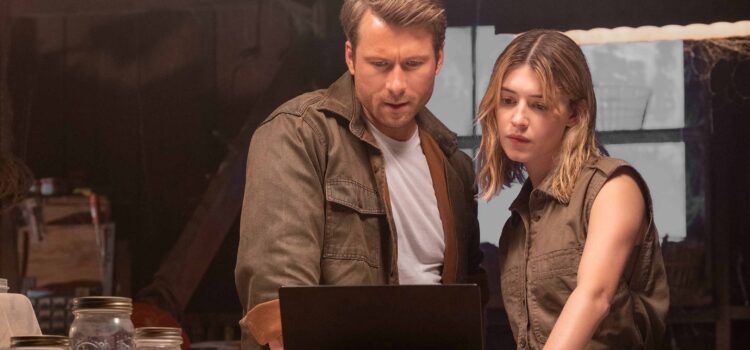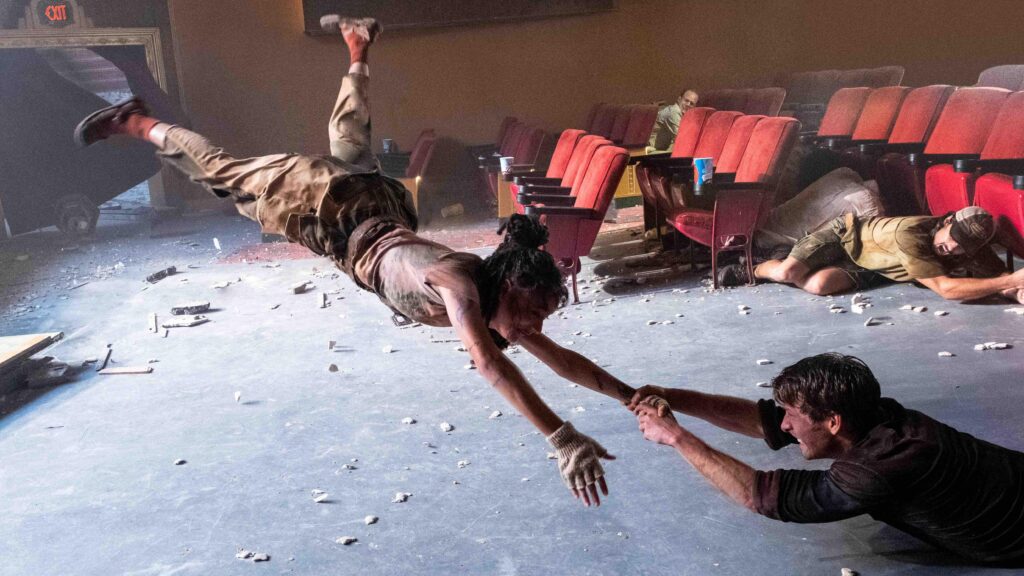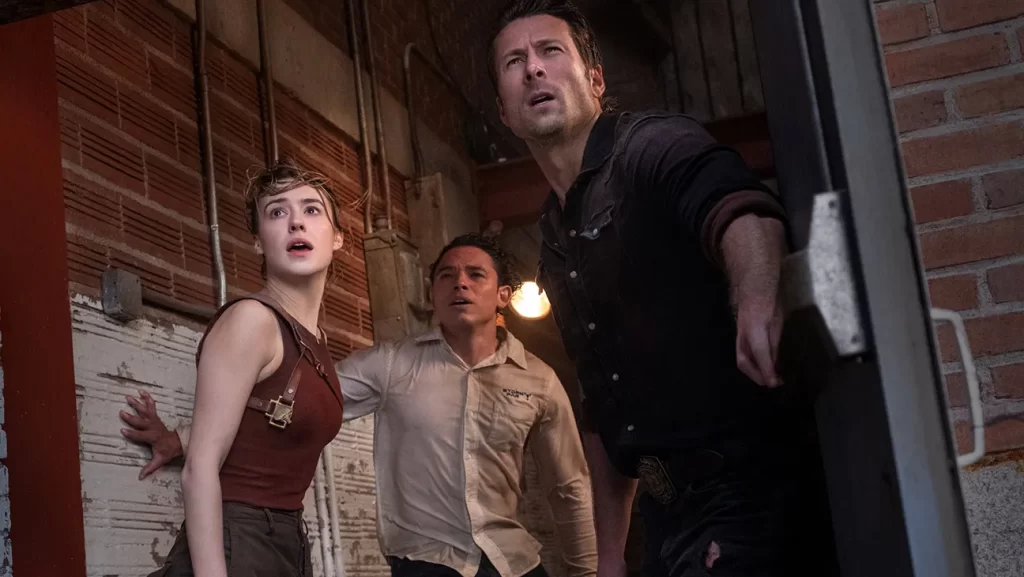By Lynn Venhaus
Brimming with vim and vigor, Stages St. Louis’ “Disney’s Newsies” pops with personality. Stressing unity in troubled times, it’s a modern message about how harnessing hope can change lives.
Believe! Like the very best underdog sports tales, this David vs. Goliath story based on the Newsboys Strike of 1899 taps into belonging, being of service to others, and making a difference in the world.
Despite the musical being set in the late 19th century, the struggles of a ragtag group of misfits, rebels and street urchins who bring out the best in each other as they fight oppression can resonate in any age, even digital, as fights for rights continue around the world.
Based on the beloved 1992 Disney movie musical that became a cult classic, it wasn’t until 20 years later that it made its Broadway debut, adapted by Harvey Fierstein.
In 2012, it earned four Tony nominations, including Best Musical, winning two for Best Score – Alan Menken’s first-ever Tony for writing the music (after eight Oscars), with lyrics by Jack Feldman, and Best Choreography by Christopher Gattelli.
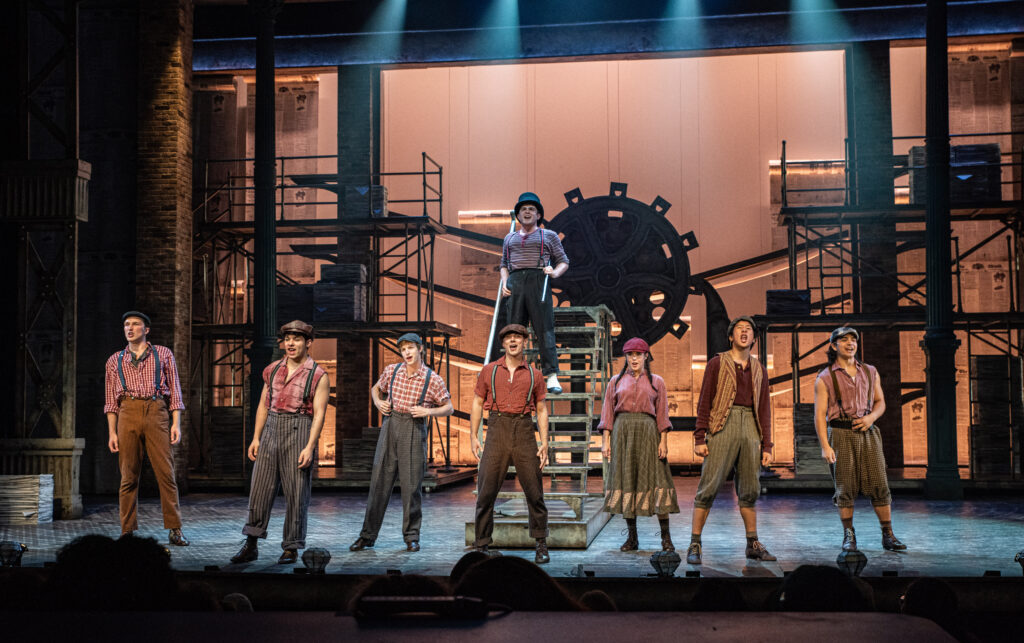
Trying to survive their harsh conditions one turn-of-the-century summer in Manhattan’s lower east side, newsboys discover rising prices and reduced meager wages threaten their livelihood. The newspaper was the only way to get the news once upon a time.
Organized by orphan Jack Kelly, they protest the practices of the publishing tycoons of the day, namely their greedy employer, Joseph Pulitzer, whose “papes” are the New York World, The Herald and The Sun.
The Muny’s 2017 production was the show’s Midwest regional premiere, after the national tour stopped at the Fox Theatre in 2016.
For its ambitious Stages premiere, it has arrived super-sized at the Kirkwood Performing Arts Center with a big-picture outlook by director Steve Bebout, a grand-scale set design by Ann Beyersdorfer, and turbo-charged acrobatic choreography by Lindsay Joy Lancaster.
Their meticulous work with a fresh-faced cast of triple-threats is dazzling. This unified ensemble of young adults, teens and youngsters shine with a contagious youthful energy – oh if we could only bottle it! — which elevates the elaborately staged pieces.
The exciting signature numbers “The World Will Know,” “Seize the Day,” “King of New York,” and ‘Once and For All” are Menken’s odes to the common man, first heard in the movie.
Menken and Feldman wrote 12 original songs for the movie, which was directed and choreographed by Kenny Ortega of “Dirty Dancing” fame and starred an 18-year-old Christian Bale. While it bombed at the box office, fervent fans grew through watching VHS tapes, DVDs and TV showings. He added seven new tunes for Broadway.
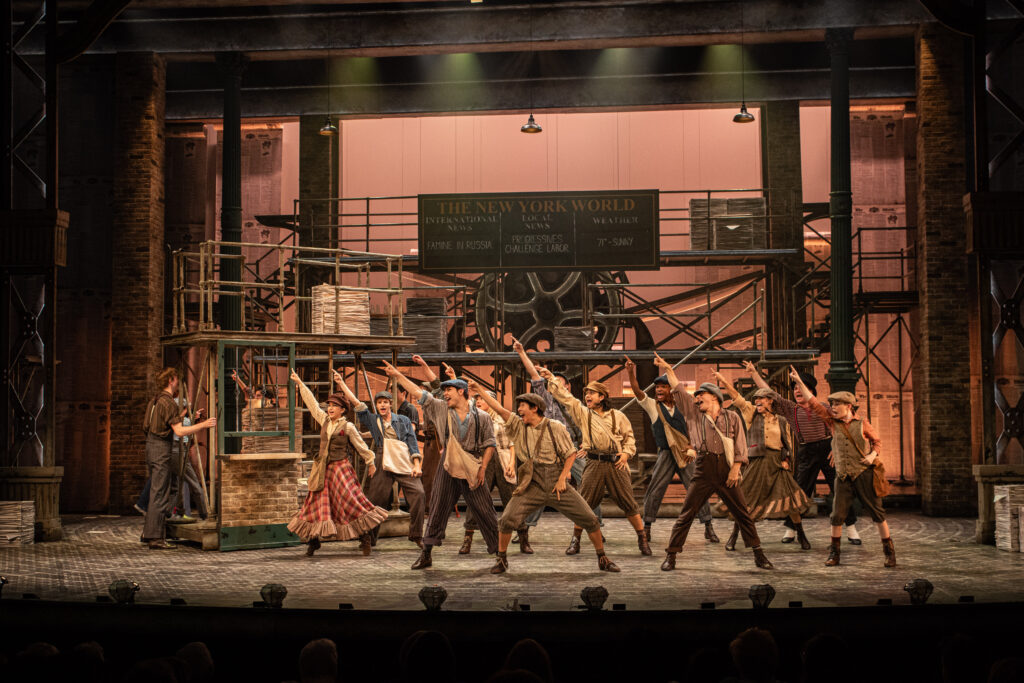
With this expansive bright and buoyant cast, the company’s strength and endurance is noteworthy. They immediately captivate with their winsome characters and cheeky attitudes, singing about “their fine life” in “Carrying the Banner” and have a blast with their new notoriety in “King of New York.”
The dancers’ joy is visible from their first full-throttle appearance to a high-spirited curtain call, where they jump, twirl, kick and twist with abundant glee. In moves that could qualify them for the medal rounds in Olympic gymnastics, they are an earthy full-court press.
PJ Palmer is Race, Noah James Lentini is Albert, Paul Giarratano is Specs, Joah Ditto is Henry, Kyleigh Hegarty is Finch, Philly Kang is Elmer, Giuseppe Little is Romeo, TJ Staten is Mush, Kyle Holmes is Buttons, Carson Hampton Palmer is Tommy Boy and Darcy, Avery Martin is JoJo, Eddie Olmo II is Mike, Ronan Ryan is Ike, Danny Grumich is Wiesel, and James Caposito is Spot Conlon.
Playing Citizens of New York, among other roles, include Lena Matthews, Alyssa Sayuk and Hazel Vogel. Annaliza Canning-Skinner is Pulitzer’s secretary Hannah. (Swings are Brittany Ambler, Jonathan Kwock and Caposito.)
They foster goodwill through relatable heart-tugging personal situations (although the meanie enforcers are brothers Morris (Ryan) and Oscar Delancey (Olmo).
As for the archetype adults, some familiar faces return to Stages – Steve Isom as Bunsen and John Flack as goon Snyder. They are joined by versatile Patrick Blindauer, who is Jacobi’s Deli owner and Governor Theodore Roosevelt, among other small parts.
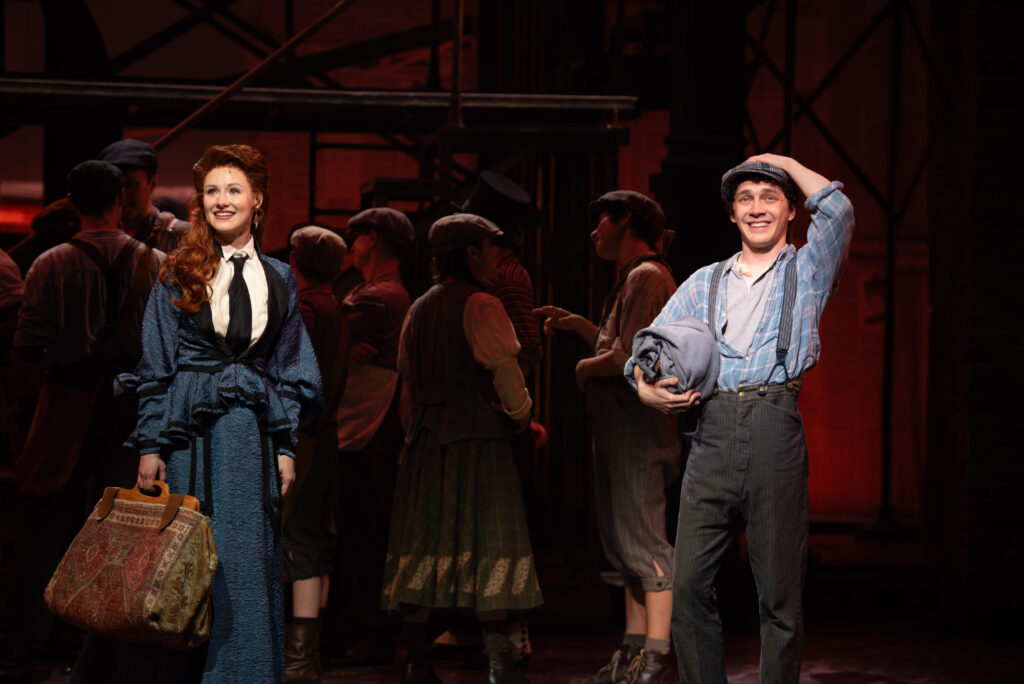
Embodying the charismatic hustler Jack Kelly is Daniel Marconi, making a memorable debut in this demanding role and nailing his wise-guy accent.
However, he has an interesting connection to Stages’ world premiere of “The Karate Kid – The Musical,” for he took part in the NYC staged reading last year of the revamped musical as Daniel LaRusso. He was also in the pre-Broadway tryout of Tony winner “The Outsiders” at the La Jolla Playhouse.
In a star-making turn, Marconi smoothly anchors this band of brothers, taking command with strong vocals and plenty of swagger as the de facto leader, establishing himself as a fast-talking wheeler-dealer who commits to their right-over-might cause. He’s quick with the quips and sincerely tries to be there for the people he cares about.
Although he dreams of going out west for a better life, he’s loyal to his best friend, “Crutchie” (Matthew Cox), a disabled orphan, and falls for the crusading reporter, Katherine Plummer (Taylor Quick).
She exposes the ruthlessness of newspaper magnate Pulitzer and his minions, who don’t care about the newsies’ plight. Together, they have a sweet moment in “Something to Believe In.”
Marconi excels at standing up to the nefarious Pulitzer, played with unrelenting heartlessness by Christopher Gurr, while firing up everyone who wants to “stick it to the man.”
He meets a kindred spirit in go-getter Davey (Richard Spitaletta) and his nine-year-old brother Les (Davin Wade), whom he takes under his wing. Davey’s intelligence and Jack’s street-smarts are an inspiring combo. Both Spitaletta and Wade are engaging performers, comfortable in their roles.
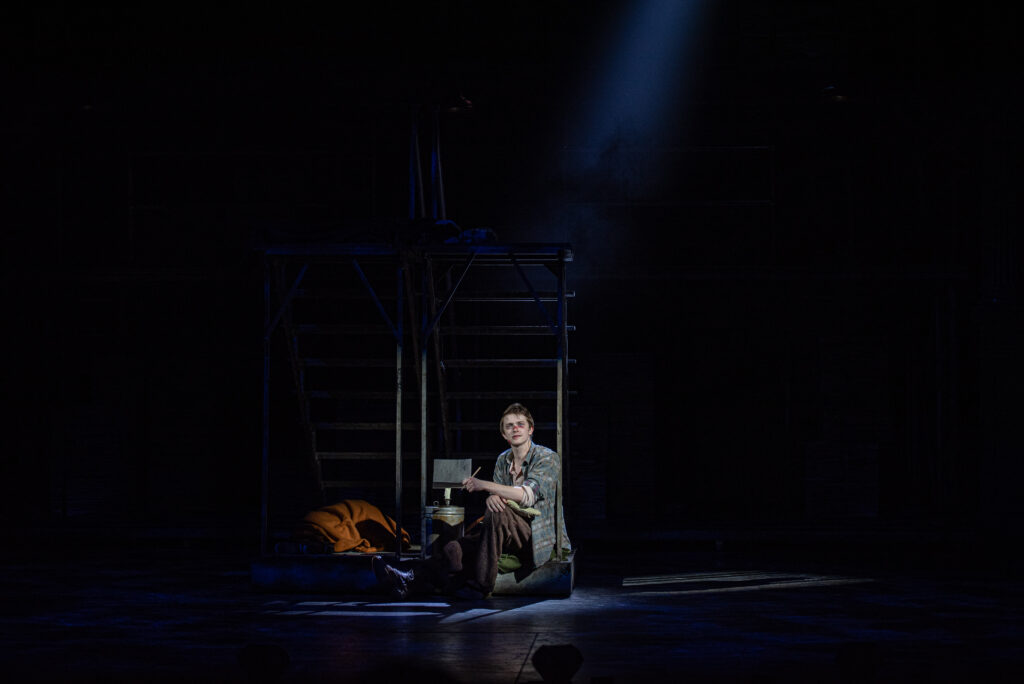
Capturing everyone’s hearts is Matthew Cox, who endears as lovable Crutchie. You’ll want to have tissues ready for his “Letter from the Refuge” song, as he details the horrors of being back at the deplorable juvenile reformatory.
Quick, as resourceful Katherine, is another standout. She made her debut earlier this summer as Shelby in “Steel Magnolias,” but here showcases her considerable singing and dancing skills in “Watch What Happens” and “Once and For All.”
Anita Michelle Jackson is an incandescent light on stage, sashaying as sassy and classy theater owner Medda Larkin, who encourages Jack’s artistic ambitions, and looks fabulous in costume designer Brad Musgrove’s divine finery.
A texture specialist, Musgrove worked with period-appropriate garb for the poor-kid cast in mostly subdued earth tones, mixed up with prints, with the rich folk in Gilded Age attire, so the only chance to break out with sumptuous fabrics was with the showgirls.
David Nehls’ savvy music direction is on point, superbly conducting Alerica Anderson on base, Travis Maddison on guitar, Lea Gerdes and JD Tolman on reeds, Ranya Iqbal on cello, Abbie Steiling on violin, Evan Palmer on trombone, Chris Miller on trumpet, and Peter Gunn on drums and percussion, while he played keyboards.
Struck by the work’s timeless can-do American spirit, Bebout said he wanted to focus on young people’s quests to figure out their place in the world. “’Newsies’ reminds us to never doubt the power of a galvanized group of kids who want to change the world,” the director wrote in his program notes.
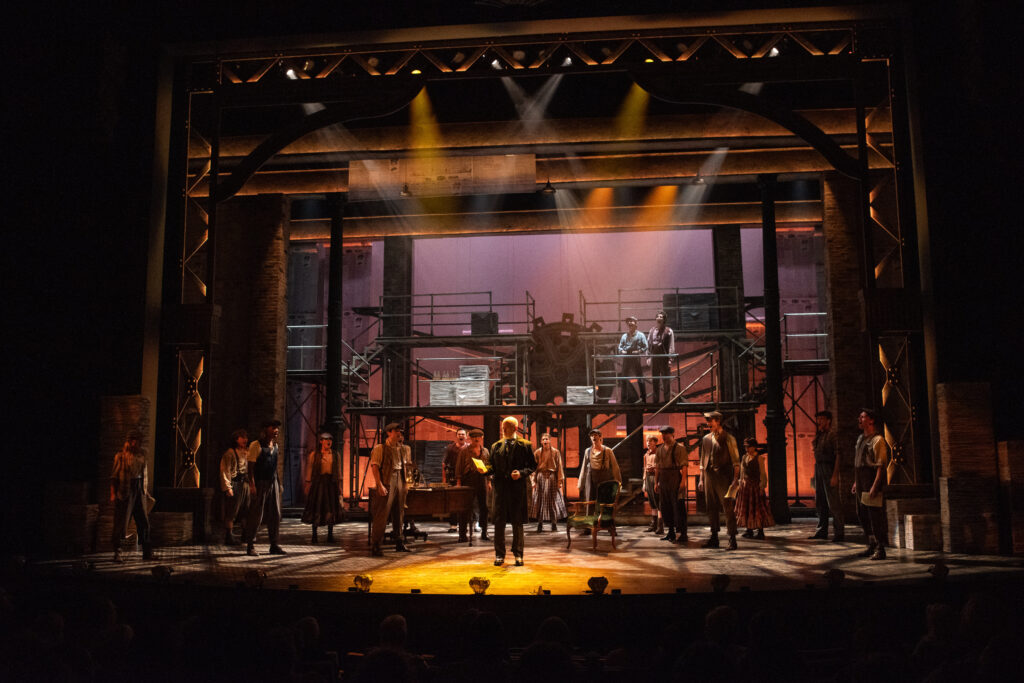
The ragamuffin newsies’ efforts bring the city to a standstill – not just a strike for decent wages, but through an ally reporter’s expose about unfair child labor practices in factories, slaughterhouses, and sweatshops are stand-up-and-cheer moments.
An important history lesson, this marked a significant turning point, when the labor union movement gained ground in a new Progressive Era as the country swelled with American Dream-seeking hopefuls who were the workforce for the Industrial Revolution.
Bebout has returned for another knockout, after he directed the comic juggernaut “Clue” last summer, which garnered five St. Louis Theater Circle Awards for Stages’ first play.
His ability to keep the fleet-footed cast swiftly moving through various locations is admirable. (Kudos to stage manager Monica Dickhens too).
The cast fluidly moves pieces of Beyersdorfer’s aesthetically impressive and practical grid set that is, by turns, a newspaper printing plant, bustling streets, makeshift living conditions, and The Refuge, with Pulitzer’s office and Medda’s theater in the mix.
The technical work is exemplary, including Bart Williams’ crisp fight choreography, Sean M. Savoie’s precise lighting design, Saki Kawamura’s adept video projection design, Mike Tracey’s sound design, and Daniel Paller’s shrewd wig and hair design.
Stages’ first foray into presenting a Disney musical in its 38 seasons is a triumph, an uplifting and heart-tugging tale of unlikely heroes that any generation can identify with.
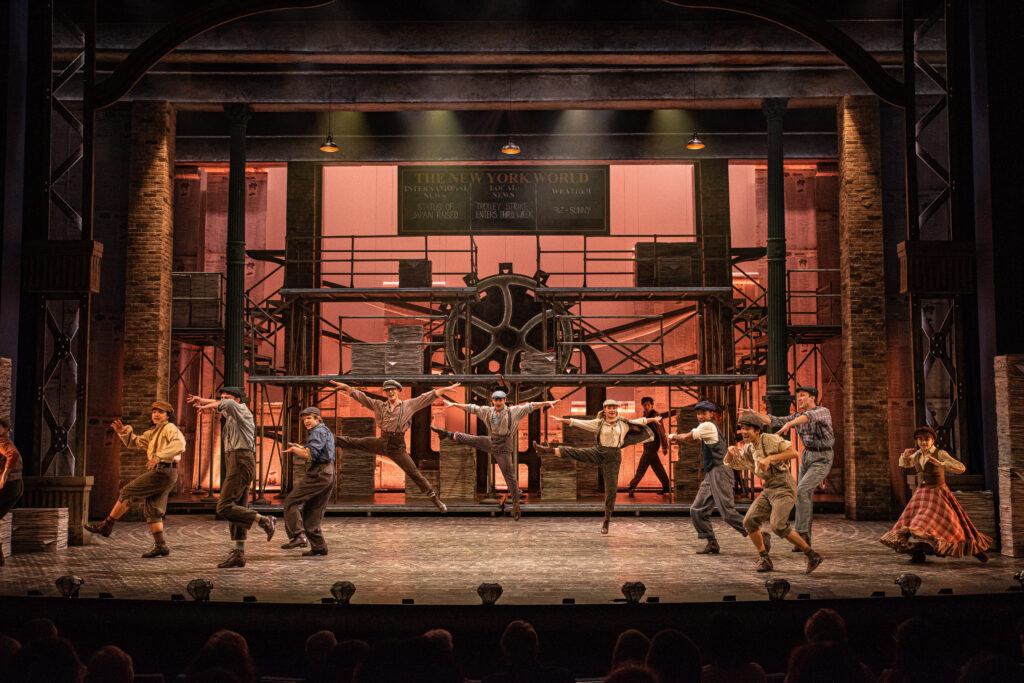
Stages St. Louis presents Disney’s “Newsies” from July 26 to Aug. 25 in the Ross Family Theatre at The Kirkwood Performing Arts Center. For tickets or more information, visit https://stagesstlouis.org
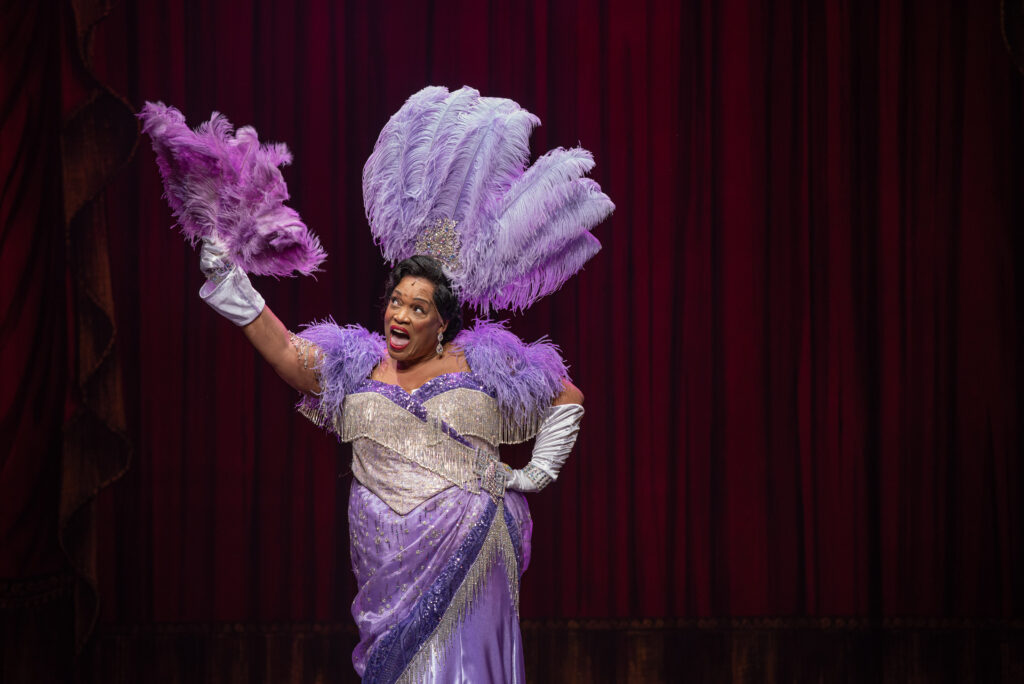

Lynn (Zipfel) Venhaus has had a continuous byline in St. Louis metro region publications since 1978. She writes features and news for Belleville News-Democrat and contributes to St. Louis magazine and other publications.
She is a Rotten Tomatoes-approved film critic, currently reviews films for Webster-Kirkwood Times and KTRS Radio, covers entertainment for PopLifeSTL.com and co-hosts podcast PopLifeSTL.com…Presents.
She is a member of Critics Choice Association, where she serves on the women’s and marketing committees; Alliance of Women Film Journalists; and on the board of the St. Louis Film Critics Association. She is a founding and board member of the St. Louis Theater Circle.
She is retired from teaching journalism/media as an adjunct college instructor.

